 If you live long enough, you can count on developing at least some form of arthritis; a touch of osteoarthritis, at the very least. Arthritis affects an estimated 4.2 million Canadians of all ages, with numbers expected to increase by 50% by 2020. And while arthritis is often considered a disease of older people, babies in diapers can get it too, and many people are affected in the prime of their lives. Here at ABLE Orthotics, our focus when dealing with patients with arthritis is to alleviate pain and help people stay as active as possible.
If you live long enough, you can count on developing at least some form of arthritis; a touch of osteoarthritis, at the very least. Arthritis affects an estimated 4.2 million Canadians of all ages, with numbers expected to increase by 50% by 2020. And while arthritis is often considered a disease of older people, babies in diapers can get it too, and many people are affected in the prime of their lives. Here at ABLE Orthotics, our focus when dealing with patients with arthritis is to alleviate pain and help people stay as active as possible.
Arthritis: a group of conditions involving damage to the joints of the body. Arthritis is the most common cause of disability in the USA. More than 20 million individuals with arthritis suffer from severe limitations in function on a daily basis. Absenteeism and frequent visits to the physician are common in individuals who have arthritis. Arthritis makes it very difficult for individuals to be physically active and they soon become home bound. Wikipedia
There are eight forms of arthritic type conditions that typically affect the joints of the feet and the lower legs. All of them cause pain, inflammation and limited movement of the joints. In this article, we will focus on two types of conditions: Osteoarthritis, which is by far the most common, and rheumatoid arthritis, the second most common.
Osteoarthritis
Osteoarthritis (degenerative joint disease) is a result of trauma or infection to the joint, or simply due to aging. Most experts do not consider osteoarthritis to be a disease. Rather, over time, it is a result of the wear-and-tear process in a body joint that can precipitate an inflammation , when there is a breakdown of the cartilage tissue that normally keeps bone from rubbing against bone.
What makes the problems worse is when the cartilage tissue is unduly stressed and broken down by the following two common ways:
- abnormal forces on the joint; forces that often result from a biomechanical fault in the lower limbs. As an example excessive pronation leads to overloading of the first metatarsal joint which can in turn result in breaking down of the cartilage and eventually osteoarthritis in the joint.
- athletes may also place excessive stress on lower limbs while performing or exercising, and as a result the joints in the lower extremities will be subject to more wear-and-tear than those people who do not participate in strenuous activity.
It is important to note that it is not disease itself that is destroying the stressed joint, but rather excessive biomechanical forces. As a result, this degeneration can accelerate if you allow a biomechanical fault to continue, untreated. You are essentially accelerating the wear-and tear process in your feet, legs, hips and lower back, because you are regularly placing undue stress on those joints in order to walk or run.
The good news is that abnormal biomechanical forces cause most of the common foot pain, including osteoarthritis. However, with proper mechanical adjustments, for example the wearing of orthotics and/or proper shoe fitting and selection, further wear and tear can be prevented. As a result pain can be drastically reduced, or even eliminated altogether.
Rheumatoid Arthritis
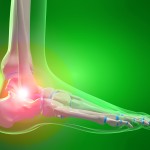 Rheumatoid arthritis is a disease that has yet to be tamed. Although rarely life threatening, it can be tormenting because of the relentless pain. It is not a result of wear-and-tear but rather an auto-immune condition in which the body’s own immune system attacks the joints thinking they are foreign matter; attempting to destroy them. Usually relief for painful joints in the feet or ankles will require custom made shoes and soft inserts to take much of the weight off the diseased metatarsal heads. It is important that a rheumatologist, a specialist well versed in the various diagnostic methods of treatments, treat this disease.
Rheumatoid arthritis is a disease that has yet to be tamed. Although rarely life threatening, it can be tormenting because of the relentless pain. It is not a result of wear-and-tear but rather an auto-immune condition in which the body’s own immune system attacks the joints thinking they are foreign matter; attempting to destroy them. Usually relief for painful joints in the feet or ankles will require custom made shoes and soft inserts to take much of the weight off the diseased metatarsal heads. It is important that a rheumatologist, a specialist well versed in the various diagnostic methods of treatments, treat this disease.
Choosing Footwear:
To alleviate the pain caused by arthritis, Canadian Certified Pedorthists recommend selecting footwear featuring:
- Rigid rocker soles (the curve at the toe area of a shoe) to decrease stress on the ball of the foot and provide a more efficient push-off
- Soft leather uppers or materials that will mold around deformities or sensitive areas
- Wide, deep, square toe-boxes with no seams over hammer toes or other sensitive areas to avoid pressure on painful joints
- Velcro closures or elastic laces to eliminate the need to lace up a shoe, if fine dexterity in the fingers is difficult
- Avoid high heels. Stick with a heel that is lower than 1″ or 2.5 cm
Talk to your Doctor who can refer you to a Pedorthist. Your pedorthist can help you make good footwear choices and provide custom orthotics, if appropriate.
Filed under: Articles On Health and Wellness by Jonathan Robinson
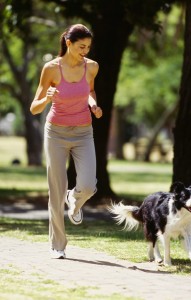 Running shoes are designed for a single direction sport(running or walking). The focus of running shoe design is to create a lightweight shoe with heel stability and proper shock absorption. They have a higher pitched heel that helps with forward propulsion. The upper of the shoe is a combination of nylon mesh, to allow breathability, and leather and suede, to provide support and durability. The outsole of the running shoe is designed to be highly durable. This type of shoe is appropriate for either running or walking. Due to the higher pitched heel, it is not appropriate for multi-directional sports such as tennis, basketball, or volleyball. The extra heel pitch increases the risk of ankle sprain when an athlete needs to make a quick turn.
Running shoes are designed for a single direction sport(running or walking). The focus of running shoe design is to create a lightweight shoe with heel stability and proper shock absorption. They have a higher pitched heel that helps with forward propulsion. The upper of the shoe is a combination of nylon mesh, to allow breathability, and leather and suede, to provide support and durability. The outsole of the running shoe is designed to be highly durable. This type of shoe is appropriate for either running or walking. Due to the higher pitched heel, it is not appropriate for multi-directional sports such as tennis, basketball, or volleyball. The extra heel pitch increases the risk of ankle sprain when an athlete needs to make a quick turn.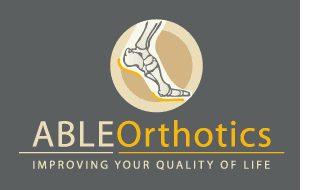

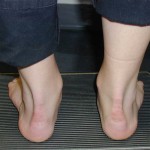

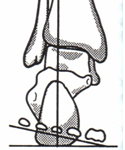
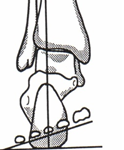
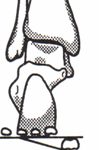
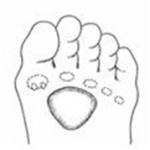
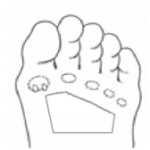

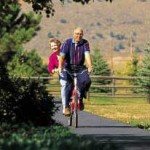 Today, there are an estimated 2 million Canadians living with Diabetes and 60,000 new cases of diagnosed Diabetes every year. Many more people display undiagnosed symptoms that can lead to this terrible disease. The incidence of diabetes is on the rise! Our focus at ABLE is to help you stay active and healthy; so you can enjoy life. For the Diabetic, applied knowledge and diligence towards foot care can have a dramatic impact on your quality of life.
Today, there are an estimated 2 million Canadians living with Diabetes and 60,000 new cases of diagnosed Diabetes every year. Many more people display undiagnosed symptoms that can lead to this terrible disease. The incidence of diabetes is on the rise! Our focus at ABLE is to help you stay active and healthy; so you can enjoy life. For the Diabetic, applied knowledge and diligence towards foot care can have a dramatic impact on your quality of life.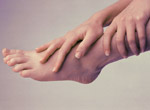
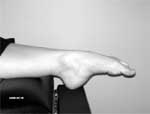
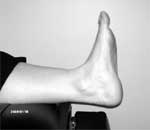
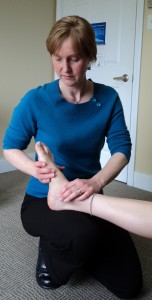
 If you live long enough, you can count on developing at least some form of arthritis; a touch of osteoarthritis, at the very least. Arthritis affects an estimated 4.2 million Canadians of all ages, with numbers expected to increase by 50% by 2020. And while arthritis is often considered a disease of older people, babies in diapers can get it too, and many people are affected in the prime of their lives. Here at ABLE Orthotics, our focus when dealing with patients with arthritis is to alleviate pain and help people stay as active as possible.
If you live long enough, you can count on developing at least some form of arthritis; a touch of osteoarthritis, at the very least. Arthritis affects an estimated 4.2 million Canadians of all ages, with numbers expected to increase by 50% by 2020. And while arthritis is often considered a disease of older people, babies in diapers can get it too, and many people are affected in the prime of their lives. Here at ABLE Orthotics, our focus when dealing with patients with arthritis is to alleviate pain and help people stay as active as possible. Rheumatoid arthritis is a disease that has yet to be tamed. Although rarely life threatening, it can be tormenting because of the relentless pain. It is not a result of wear-and-tear but rather an auto-immune condition in which the body’s own immune system attacks the joints thinking they are foreign matter; attempting to destroy them. Usually relief for painful joints in the feet or ankles will require custom made shoes and soft inserts to take much of the weight off the diseased metatarsal heads. It is important that a rheumatologist, a specialist well versed in the various diagnostic methods of treatments, treat this disease.
Rheumatoid arthritis is a disease that has yet to be tamed. Although rarely life threatening, it can be tormenting because of the relentless pain. It is not a result of wear-and-tear but rather an auto-immune condition in which the body’s own immune system attacks the joints thinking they are foreign matter; attempting to destroy them. Usually relief for painful joints in the feet or ankles will require custom made shoes and soft inserts to take much of the weight off the diseased metatarsal heads. It is important that a rheumatologist, a specialist well versed in the various diagnostic methods of treatments, treat this disease.